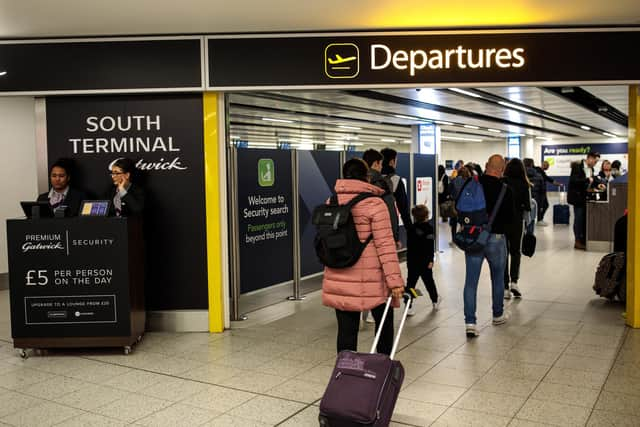This is how the UK Civil Aviation Authority’s improved airspace change process will affect London Gatwick Airport
and live on Freeview channel 276
The revised airspace change process, known as CAP1616, has been published yesterday (October 30) following a comprehensive review.
The new version will come into force on January 2, 2024. Further associated guidance will be published in due course.
Advertisement
Hide AdAdvertisement
Hide AdThe UK Civil Aviation Authority’s improvements focus on simplification, clarification, and proportionality of how the requirements of the process are applied to individual airspace change proposals depending on their size, scale and impact.


The regulator’s updated guidance will also make the airspace change process easier to follow and sets out the requirements of the stages and gateways needed to progress an airspace change proposal.
The review drew on insights received from those impacted by airspace change, including airspace change sponsors, commercial aircraft operators, the General Aviation community, community groups, environmental groups, and the Ministry of Defence.
Jon Round, head of airspace, aerodromes and air traffic management at the UK Civil Aviation Authority, said: “Airspace change affects many communities across the country, so it is important that the process for proposing changes is clear, simple and proportionate in how it is applied.
Advertisement
Hide AdAdvertisement
Hide Ad“Our review has allowed us to reflect on feedback and deliver a package of improvements, so that those proposing airspace changes can more easily understand what they need to do to meet the requirements of the process.”
The way the UK Civil Aviation Authority makes airspace decisions is not changing, with the revised airspace change process and improved guidance clearly defining the requirements.
This makes it simpler for change sponsors and stakeholders to better understand what they need to do in the process, and the engagement airspace change sponsors have with stakeholders should be more focussed and meaningful.
The UK Civil Aviation Authority has also made it clear how the guidance can be applied proportionately and tailored to each proposal put forward.
This is in addition to making it clear that any airspace change must be consistent with the Airspace Modernisation Strategy.